The North American plains once thundered with the hooves of millions of bison, their seasonal movements shaping the landscape in profound ways. Today, as climate change and agricultural pressures transform America’s grasslands, scientists and conservationists are looking to these iconic animals as unexpected allies in ecosystem restoration. Bison migrations represent more than just animal movement—they’re a complex ecological dance that cultivated the Great Plains for thousands of years. With less than 4% of America’s original tallgrass prairie remaining, understanding how bison interact with grasslands offers compelling insights into restoring these threatened ecosystems. This article explores the fascinating relationship between bison migrations and grassland health, revealing how bringing back these massive mammals and their ancient movement patterns could help revitalize America’s heartland.
The Historic Role of Bison in North American Ecosystems

Before European settlement, an estimated 30-60 million bison roamed North America, creating one of the continent’s most significant wildlife phenomena. These massive creatures—weighing up to 2,000 pounds—weren’t just passive inhabitants of the grasslands; they were ecosystem engineers. Their grazing patterns, wallowing behaviors, and seasonal migrations collectively shaped the prairie landscape over millennia. Bison herds moved in response to seasonal changes, rainfall patterns, and forage availability, creating a dynamic disturbance regime that promoted plant diversity and ecosystem resilience. Their presence affected everything from soil composition to insect communities, helping to maintain the complex ecological balance of North America’s grassland systems. This historic relationship between bison and grasslands represents one of the most important large mammal-ecosystem interactions in North American ecological history.
The Collapse of the Bison-Grassland Relationship
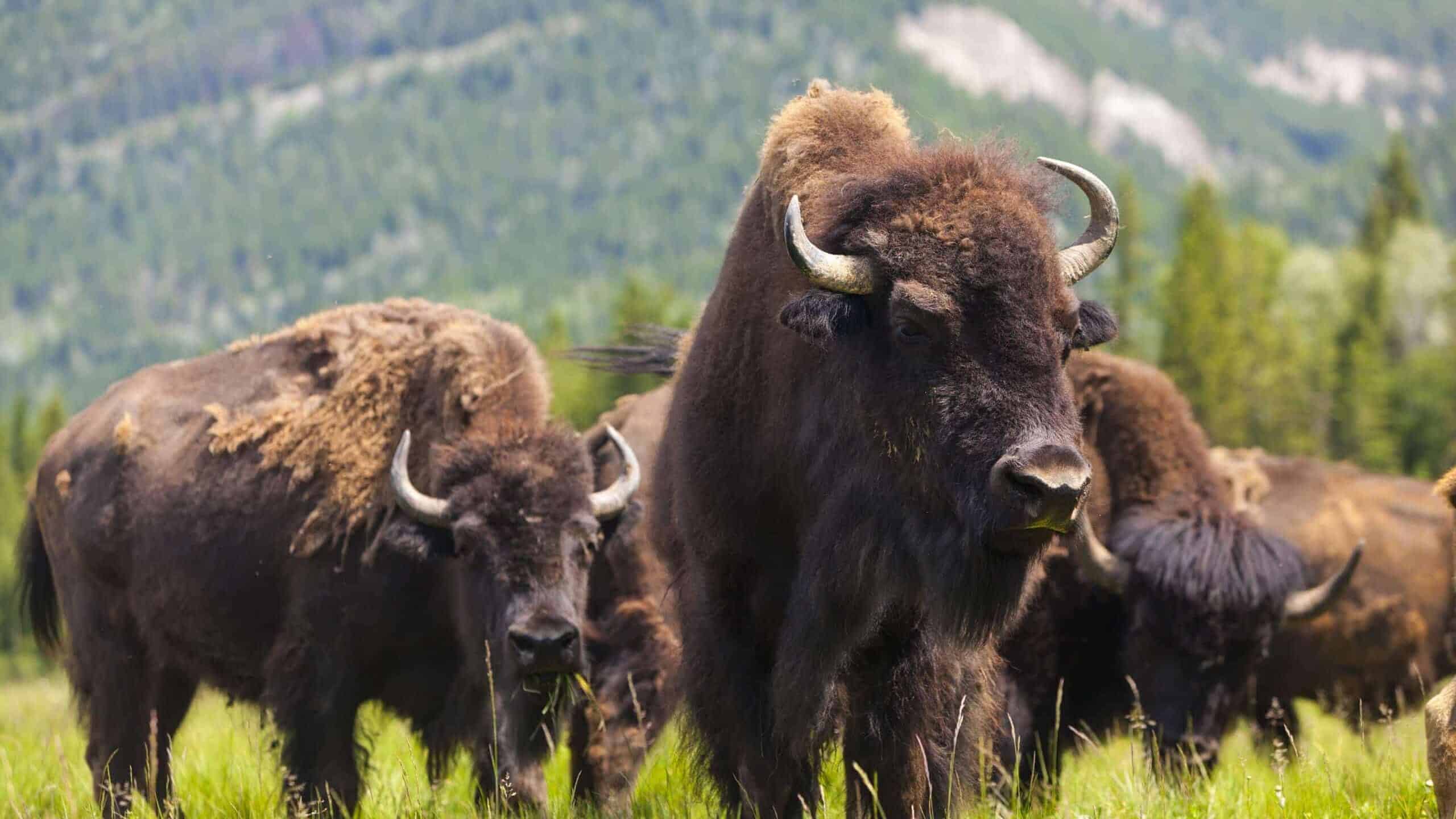
The destruction of America’s bison herds represents one of history’s most dramatic wildlife decimations. By 1884, fewer than 1,000 bison remained after decades of commercial hunting, government-sanctioned extermination campaigns, and habitat loss. This collapse didn’t just threaten the species—it fundamentally altered grassland ecosystems. Without millions of migrating bison, prairies lost their primary grazing pressure, seed dispersal mechanism, and nutrient cycling system. The disappearance of bison coincided with the rapid conversion of grasslands to agricultural use, with settlers plowing under prairie that had evolved with grazing mammals for thousands of years. Today, tallgrass prairie is among North America’s most endangered ecosystems, with less than 4% of the original extent remaining. The ecological consequences of removing bison from the landscape continue to reverberate through grassland systems, affecting everything from plant community composition to carbon storage capacity.
How Bison Migrations Shape Plant Communities
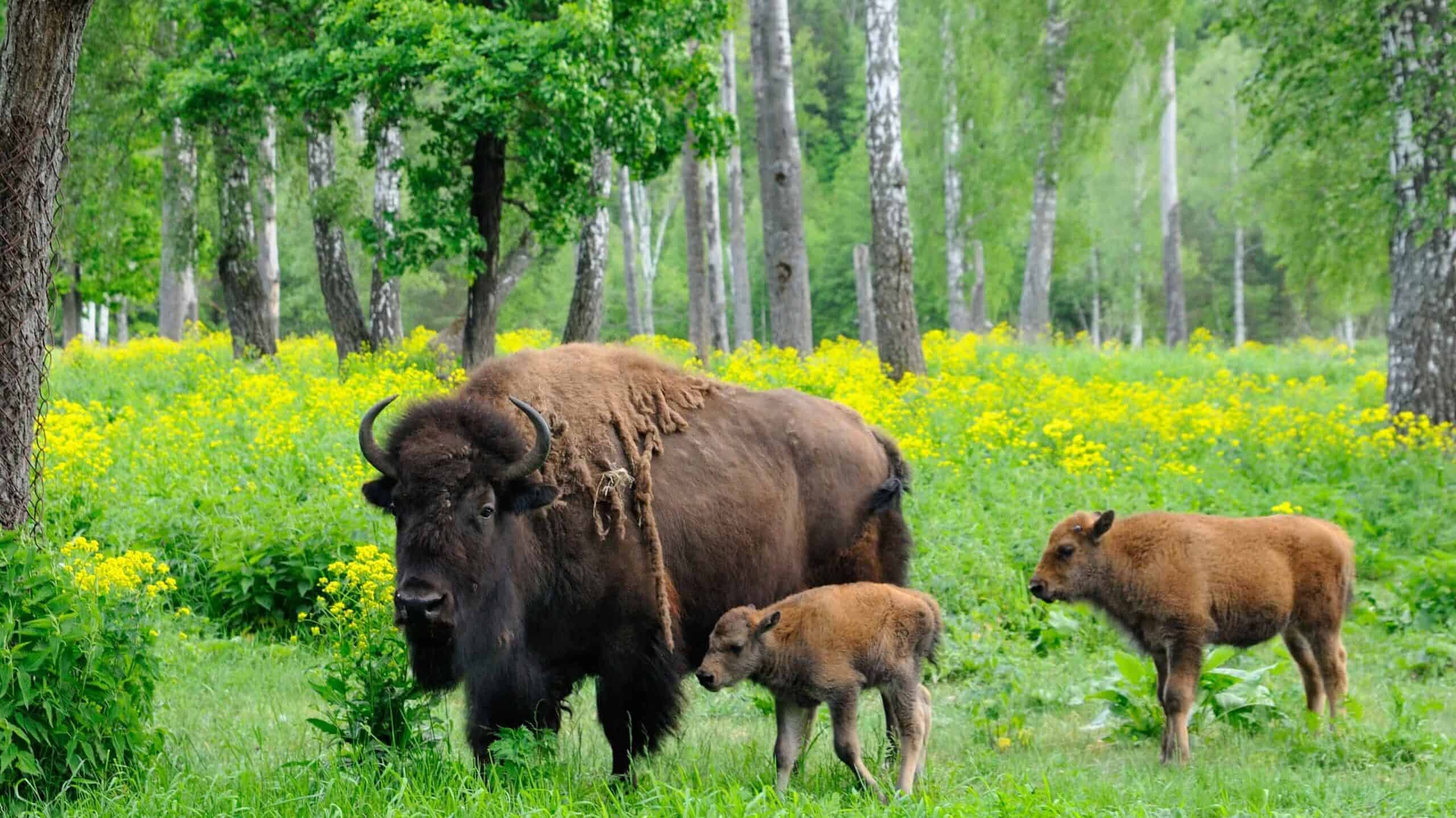
Bison migrations create what ecologists call a “grazing lawn” effect across the landscape. Unlike cattle, which tend to graze uniformly, bison are selective foragers that create patches of intensively grazed areas interspersed with lightly grazed sections. This heterogeneous grazing pattern increases plant diversity by preventing any single species from dominating. Research at sites like Konza Prairie Biological Station in Kansas has demonstrated that bison-grazed areas support up to 50% more plant species than ungrazed areas. The timing of their migrations also matters significantly. By grazing intensively in some areas and then moving on, bison give vegetation recovery periods that promote root growth and carbon storage. Their preference for grasses over forbs (flowering plants) creates competitive opportunities for wildflowers and other non-grass species, increasing overall plant diversity. These migration-driven grazing patterns ultimately create a mosaic of habitat types that support diverse wildlife communities.
Nutrient Cycling: The Invisible Impact of Bison Movement

One of the most significant yet overlooked ecological benefits of bison migrations involves nutrient cycling. As bison move across landscapes, they transport and deposit nutrients through their waste, effectively redistributing fertility across the prairie. A single adult bison can produce up to 50 pounds of nutrient-rich dung daily, creating hotspots of soil fertility that benefit plant growth. This process is particularly important in grassland systems, where nutrients can become locked in plant material without sufficient grazing pressure. Studies have shown that areas with bison activity can have up to 33% higher nitrogen availability in soils compared to areas without large grazers. The seasonal movement patterns of bison ensure that these nutrient deposits are spread across wide areas rather than concentrated in a single location, creating a more balanced distribution of soil resources. This nutrient transportation service represents a crucial ecosystem function that stationary livestock management cannot replicate.
Seed Dispersal Through Migration Corridors
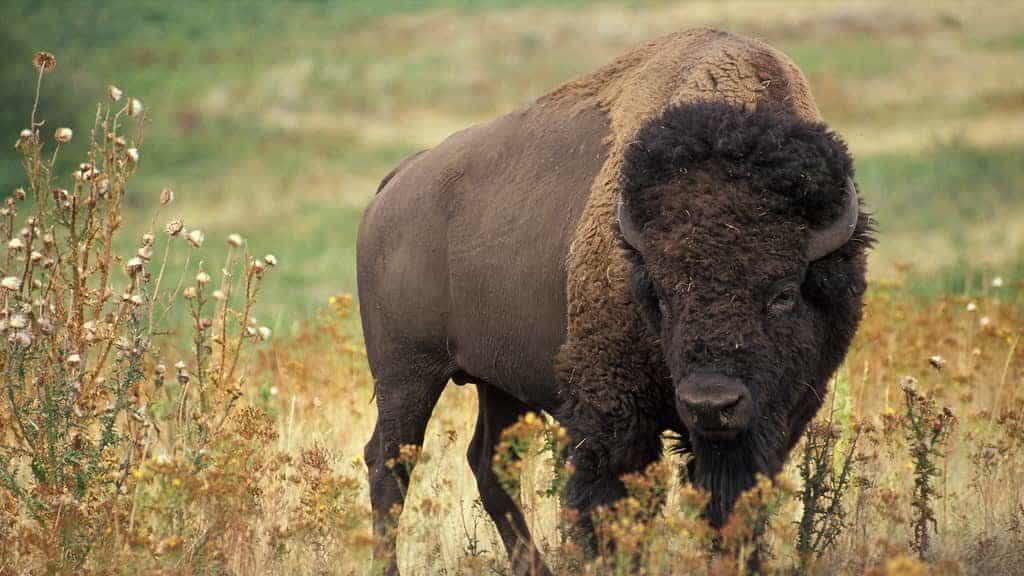
Bison serve as remarkable seed dispersal agents through their migrations, functioning as mobile connectivity corridors for plant genetics. Their shaggy coats can carry thousands of seeds from dozens of plant species, transporting them across miles of prairie. This zoochory (animal-based seed dispersal) helps maintain genetic connectivity between isolated plant populations and assists in colonizing disturbed areas. Research has documented over 76 different plant species whose seeds are regularly transported by bison. Additionally, many prairie seeds pass through the bison digestive tract unharmed, with the added benefit of being deposited in fertilizing dung. This endozoochory provides an important dispersal mechanism for certain prairie plants that have co-evolved with large grazers. Modern studies have shown that areas with restored bison populations experience more rapid plant colonization after disturbances like fire or drought compared to areas without large migratory mammals, highlighting the practical restoration benefits of this ancient ecological relationship.
Climate Resilience Through Bison-Driven Landscape Heterogeneity
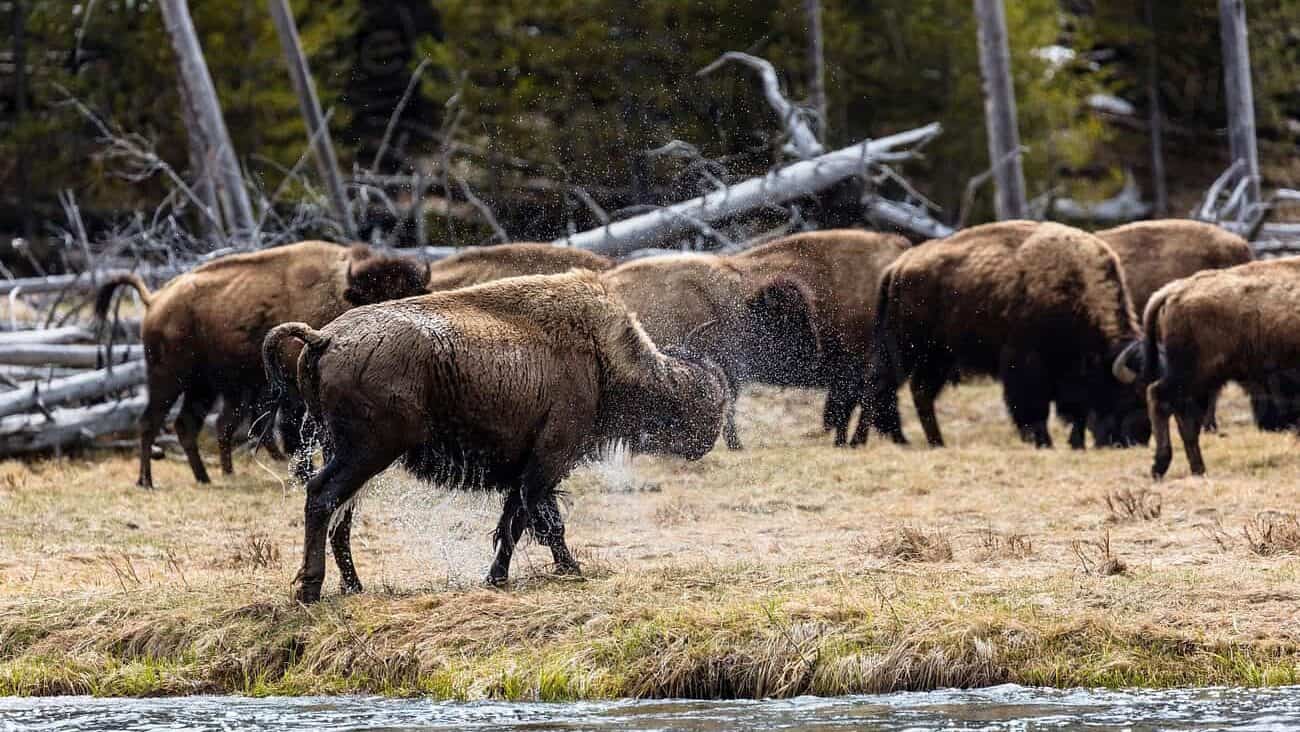
As climate change intensifies weather extremes across North America’s grasslands, the landscape heterogeneity created by bison movements offers surprising climate resilience benefits. Bison grazing creates a diverse mosaic of vegetation heights, densities, and species compositions. This structural diversity means that even during droughts or floods, some portion of the prairie landscape remains functional, providing wildlife habitat and maintaining ecosystem processes. Recent studies in the northern Great Plains have demonstrated that bison-grazed landscapes are more resistant to drought, maintaining higher plant productivity during dry periods than comparable cattle-grazed or ungrazed areas. The wallowing behavior of bison—where they create depressions by rolling in dust—also creates microhabitats that collect water, serving as moisture reservoirs during dry periods. These diverse habitat patches resulting from bison movement patterns essentially spread risk across the landscape, making the entire ecosystem more resilient to climate fluctuations.
The Carbon Sequestration Potential of Bison-Grazed Grasslands

In an era of rising atmospheric carbon dioxide levels, grasslands represent a significant but underappreciated carbon sink, storing approximately 34% of terrestrial carbon globally—primarily in their extensive root systems. Emerging research suggests that bison grazing, particularly when it mimics historic migration patterns, can enhance this carbon sequestration capacity. Studies at The Nature Conservancy’s Joseph H. Williams Tallgrass Prairie Preserve in Oklahoma have found that properly managed bison grazing stimulates greater below-ground root growth in prairie plants compared to ungrazed areas or those with cattle. This enhanced root development translates directly to increased carbon storage. The selective grazing patterns of bison, which target primarily grasses while leaving deep-rooted forbs, promotes plant communities with greater below-ground biomass and carbon storage potential. Additionally, the soil disturbance created by bison hooves helps incorporate organic matter deeper into the soil profile where it decomposes more slowly, further enhancing long-term carbon sequestration. With proper management, bison-grazed grasslands could play a meaningful role in natural climate solutions.
Modern Conservation Efforts to Restore Bison Migrations
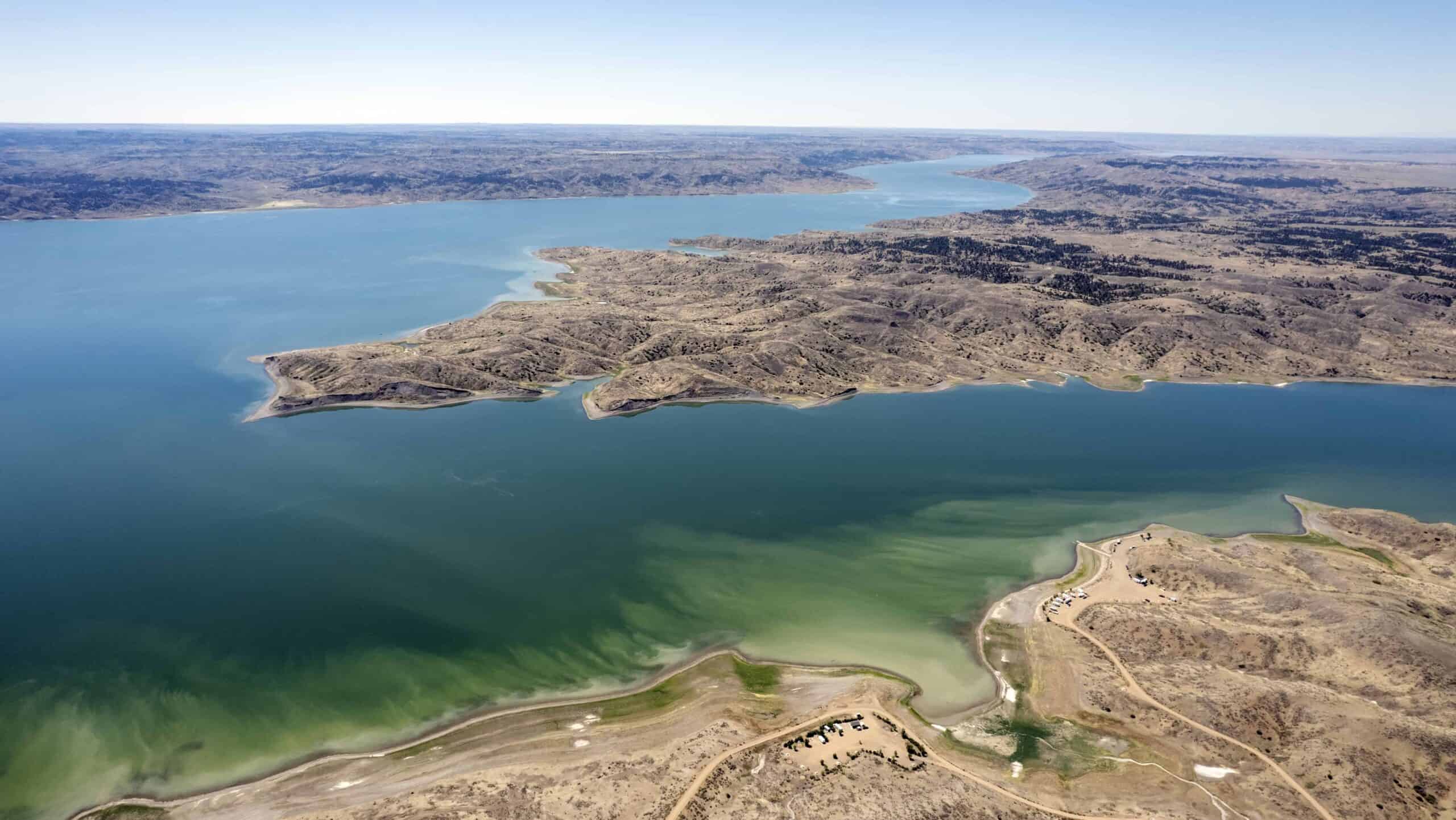
Several ambitious projects across North America are working to restore functional bison migrations, though at scales much smaller than historical ranges. The American Prairie Reserve in Montana represents one of the most significant efforts, aiming to create a 3.5-million-acre reserve where bison can once again move across a connected landscape. In Yellowstone National Park, bison have naturally reestablished seasonal migration patterns, moving from summer ranges in the park interior to winter ranges at lower elevations. The InterTribal Buffalo Council, representing over 76 tribes, leads numerous restoration projects reconnecting indigenous communities with bison while restoring ecological processes. On the Blackfeet Reservation in Montana, the Iinnii Initiative is working to restore free-ranging bison that can move between tribal lands and Glacier National Park. While these projects face significant challenges—including limited space, policy barriers, and human-wildlife conflict concerns—they demonstrate growing recognition of the ecological importance of not just restoring bison but restoring their movement patterns. Each project serves as a living laboratory for understanding how bison migrations can be incorporated into modern landscapes.
Comparing Bison and Cattle: Why Species Matters for Grassland Health

While cattle now occupy much of the former range of bison in North America, research increasingly demonstrates that these domesticated bovines affect grasslands differently than their wild cousins. Bison are more selective grazers, preferentially consuming grasses while largely avoiding forbs (flowering plants), which increases plant diversity. In contrast, cattle tend to graze more uniformly across plant species. Physiologically adapted to the extremes of the Great Plains, bison remain active grazers even during harsh weather when cattle typically seek shelter, creating different seasonal impacts. Studies at The Nature Conservancy’s Tallgrass Prairie Preserve have documented that bison-grazed areas support approximately 14% more plant species than comparable cattle-grazed areas. Additionally, bison spend less time near water sources than cattle do, reducing riparian zone degradation. Their wallowing behavior—absent in cattle—creates microhabitats that support specialized plant and animal communities. While well-managed cattle grazing can benefit grasslands, the distinct ecological role of bison suggests they offer unique benefits for prairie restoration that cattle cannot fully replicate.
Benefits for Wildlife Beyond Plant Communities
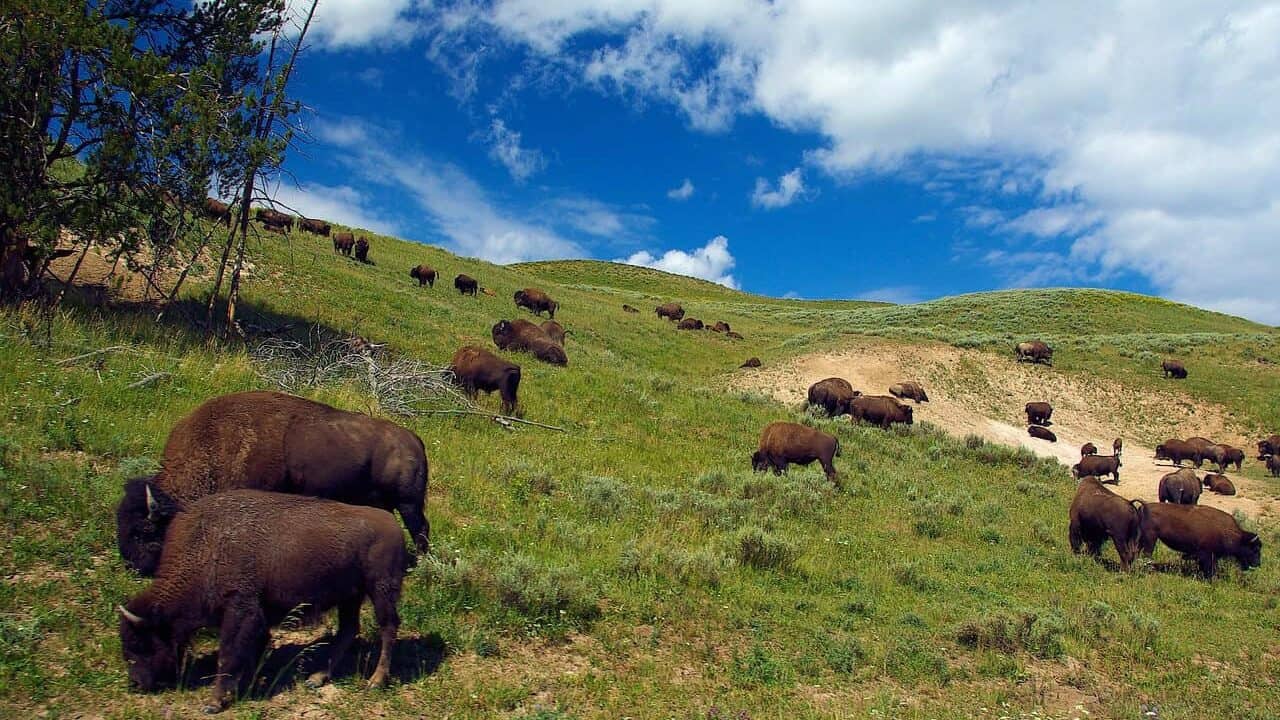
The restoration of bison migrations benefits far more than just plant communities—it creates cascading positive effects throughout grassland food webs. Grassland birds, among North America’s most rapidly declining groups, show particularly strong responses to bison-created habitat heterogeneity. Species like grasshopper sparrows thrive in shorter grazed patches, while Henslow’s sparrows prefer taller ungrazed sections—both habitat types created by patchy bison grazing. At the Konza Prairie Biological Station, researchers have documented 42% higher bird diversity in bison-grazed areas compared to ungrazed prairie. Small mammals also benefit from the diverse vegetative structure, with prairie voles preferring ungrazed sections while deer mice thrive in heavily grazed patches. The dung from migrating bison supports complex decomposer communities, including specialized dung beetles and other insects that become prey for birds and small mammals. Bison wallows fill with water after rains, creating ephemeral wetlands that serve as breeding habitat for amphibians and invertebrates. Through these varied mechanisms, the reintroduction of bison movement patterns helps restore not just grassland plant communities but entire prairie ecosystems.
Challenges to Restoring Functional Bison Migrations

Despite growing interest in bison restoration, numerous obstacles complicate efforts to reestablish functional migrations. The fragmentation of North America’s grasslands by roads, fences, agricultural fields, and urban development creates physical barriers to movement that didn’t exist historically. Disease concerns, particularly regarding brucellosis in some bison populations, have led to strict regulations limiting bison movement in regions like the Greater Yellowstone Ecosystem. Social resistance also presents challenges, with some ranching communities expressing concerns about competition for grazing land, disease transmission to cattle, and property damage. Additionally, most conservation areas are simply too small to accommodate the large-scale movements that characterized historical bison migrations. The American Prairie Reserve estimates that a minimum of 450,000 acres of connected habitat is needed to support ecologically meaningful bison movements—a scale difficult to achieve in today’s fragmented landscape. Legal frameworks for managing migratory bison that cross multiple jurisdictions remain underdeveloped, creating regulatory uncertainty that complicates restoration efforts. These multifaceted challenges require innovative solutions that balance ecological goals with social, economic, and political realities.
The Role of Indigenous Knowledge in Bison Restoration
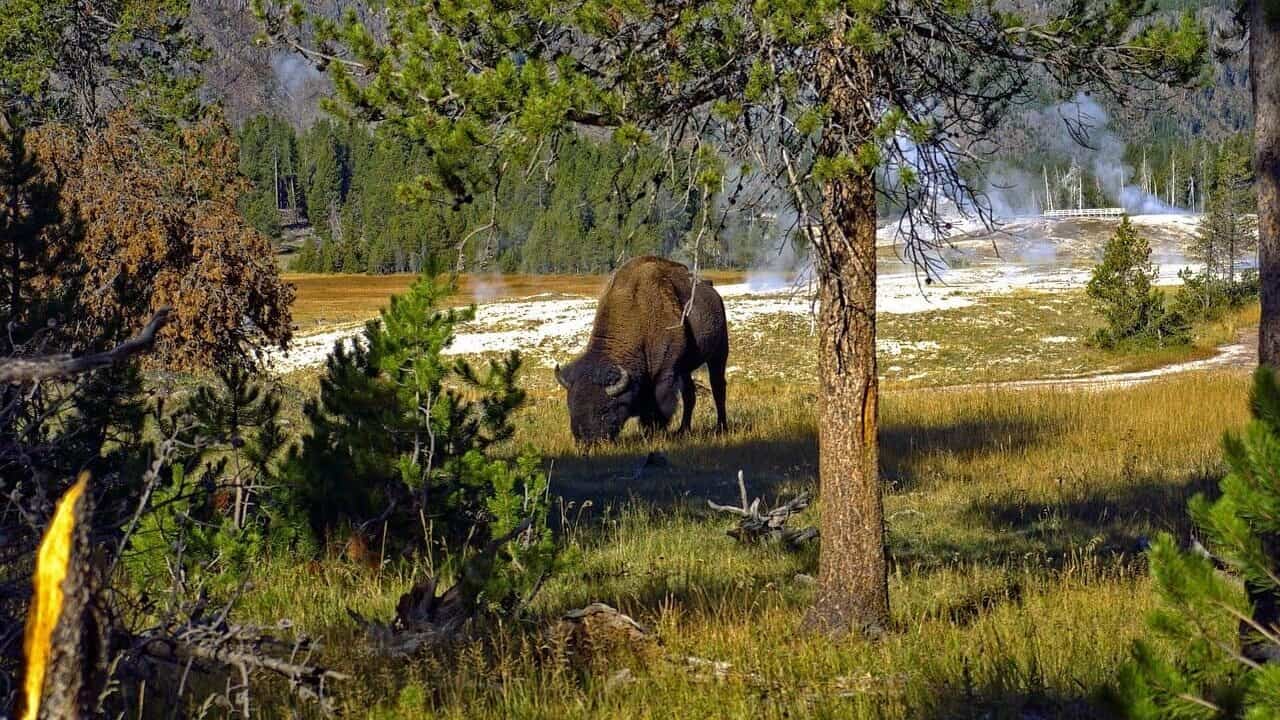
Indigenous peoples of North America maintained sophisticated relationships with bison for thousands of years, developing deep ecological knowledge about their movement patterns and behaviors. Today, this traditional ecological knowledge plays an increasingly important role in restoration efforts. The InterTribal Buffalo Council leads numerous projects incorporating traditional management approaches alongside scientific methods. On the Fort Peck Reservation in Montana, the Assiniboine and Sioux tribes manage the largest cultural bison herd in the country, using traditional knowledge to guide grazing patterns that benefit both the animals and the prairie. The Blackfeet Nation’s Iinnii Initiative explicitly recognizes the cultural and ecological connections between bison migrations and landscape health, working to restore traditional relationships between people, bison, and grasslands. These indigenous-led efforts often emphasize holistic approaches that consider not just ecological outcomes but cultural revitalization, economic opportunities, and food sovereignty. By integrating traditional knowledge with contemporary science, these projects demonstrate more comprehensive restoration models that honor both the ecological and cultural significance of bison migrations across North America’s grasslands.
The restoration of bison migrations represents more than just the return of an iconic species—it offers a pathway toward more resilient, diverse, and functional grassland ecosystems across America. As climate change intensifies and biodiversity continues to decline, the ecological services provided by migrating bison—from enhancing plant diversity to improving carbon sequestration—become increasingly valuable. While full restoration of historical bison movements across the entire Great Plains remains impractical, even smaller-scale migration patterns can deliver significant ecological benefits to fragmented grassland systems. The ongoing work of conservation organizations, indigenous communities, and research institutions demonstrates that reintroducing this keystone ecological process is both possible and beneficial, though not without challenges. Perhaps most importantly, bison restoration efforts remind us that conservation isn’t just about preserving static natural systems but about restoring dynamic ecological processes that can adapt and respond to changing conditions. In the thundering hooves of bison, we may find not just echoes of America’s ecological past but important solutions for its environmental future.
- The Coldest Town in America—And How People Survive There - August 9, 2025
- How Some Birds “Steal” Parenting Duties From Others - August 9, 2025
- 12 Deep-Sea Creatures You Won’t Believe Exist - August 9, 2025

